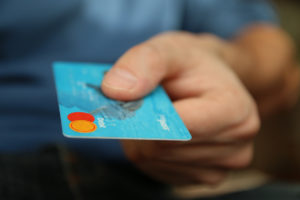 I live in a resort area so we get all types of fraud activity. Stolen credit cards, stolen and counterfeit checks and counterfeit cash, in addition to the day to day shoplifting and employee theft cases keep us busy. For L.P. departments in our area this can become overwhelming from an investigation standpoint. Employee training and awareness is crucial to effectively combat this activity, L.P. Managers can’t be in a store 7 days a week and even if we could be we can’t see everything. Store associates and managers are the first line of defense in preventing fraud at the point of sale. Here are some tips to identify and deter financial transaction fraud.
I live in a resort area so we get all types of fraud activity. Stolen credit cards, stolen and counterfeit checks and counterfeit cash, in addition to the day to day shoplifting and employee theft cases keep us busy. For L.P. departments in our area this can become overwhelming from an investigation standpoint. Employee training and awareness is crucial to effectively combat this activity, L.P. Managers can’t be in a store 7 days a week and even if we could be we can’t see everything. Store associates and managers are the first line of defense in preventing fraud at the point of sale. Here are some tips to identify and deter financial transaction fraud.
Let’s start with credit card fraud. I used to harp on cashiers to look for signatures on the back of cards and if a card wasn’t signed or had “See I.D.” written on it, they were expected to ask for ID. When proper ID was not produced a transaction was declined, no exceptions. With today’s technology, people swipe their cards or hold smartphones up to the card reader and the information is transferred to the Point of Sale (POS). Chip cards are also considered a more secure means of payment than the older self-swipe. With chip technology every transaction has a unique code attached to it, whereas the old mag stripe cards had unchanging data that could be replicated and transferred to another card (source creditcard.com). Because chip enabled cards still have mag stripes and not all companies have changed to chip reader technology, fraud is still an opportunity. To minimize risk, if a small transaction for a few dollars is followed by a large dollar transaction be cautious, there is a strong possibility a stolen card is being used. The small transaction acts as a test to be sure the card is going to work. Second, if you have chip readers, don’t bypass them. Ask for a different form of payment if necessary but let the system work for you. You are always free to ask for an ID to compare to the card, and turn down a sale if the customer doesn’t have one.
Check fraud is becoming less common. The advent of Apple Pay, Pay Pal, and pay apps for various companies, has resulted in fewer checks being written. Still, business checks are pretty common and a personal check is tendered from time to time. Check creation kits are easy to purchase and with a routing and account number it is a piece of cake to create a fraudulent check with any name, address or phone number you want on it. The good thieves will also have fake ID’s to match the information on the check. A few actions you can take to reduce the chance of check fraud in your store include, requiring a government issued ID for check transactions and recording the ID number on the check. If your POS system can electronically process a check let it. Don’t override the system if a check is declined. Look for high dollar checks being written in the later evening hours and on weekends when banks tend to be closed. The bad guys are counting on you not being able to verify account information.
Counterfeit money is a problem and with high quality printers available on today’s market it is easier for criminals to create currency that at first glance appears very convincing. Without going into specifics, counterfeiters have found ways to get paper that can pass muster with regular people like you and me, though trained bankers would notice the difference in quality. They spread their money around a town for a few days and then leave before authorities can start following a trail. The only thing I can suggest to combat these thieves is to watch for the small purchases, such as a pack of gum or soft drink being purchased with a $50 or $100 bill. The criminals are getting real money in change at the cost of no more than a couple of bucks. Along the same lines, watch for the $1 bills that have been altered by pasting higher denominations on two of the corners, usually $50’s and $100’s although sometimes $20’s are used. These bills will be mixed in with several other bills with the dollar corners concealed in the stack.
One last word of caution, if you use the words “In Training” on your name badges, stop! Criminals look for people they think are new and easier to con. Identifying your new people is an invitation for trouble. Financial transaction fraud can be expensive and cost you a lot of money. Properly training cashiers and monitoring transactions can help you deter the crime from happening in the first place.

Speak Your Mind
You must be logged in to post a comment.